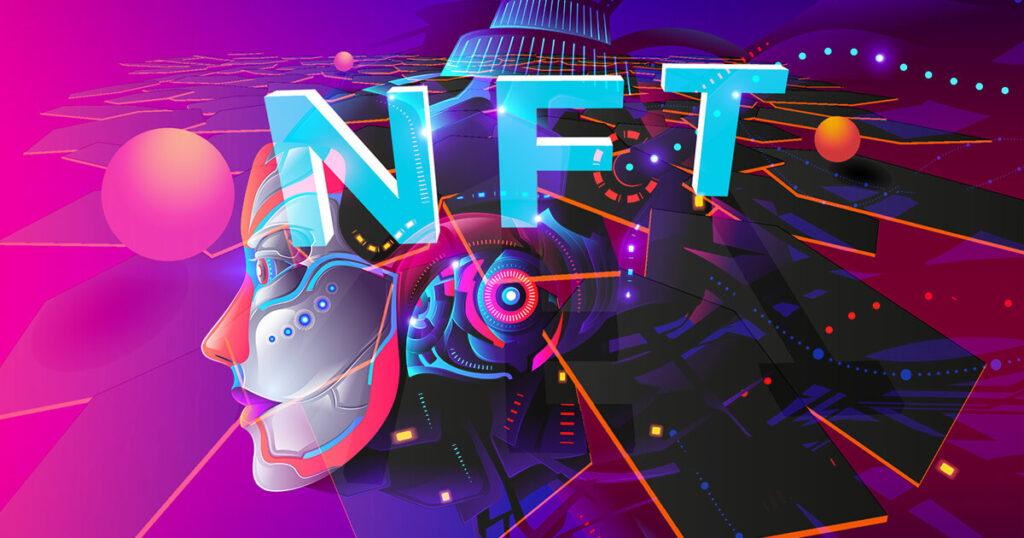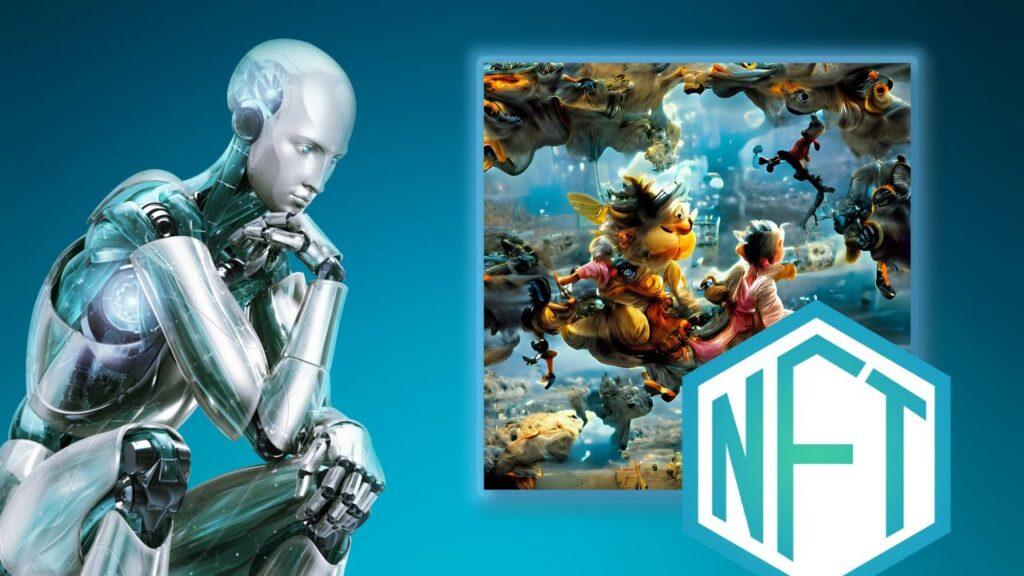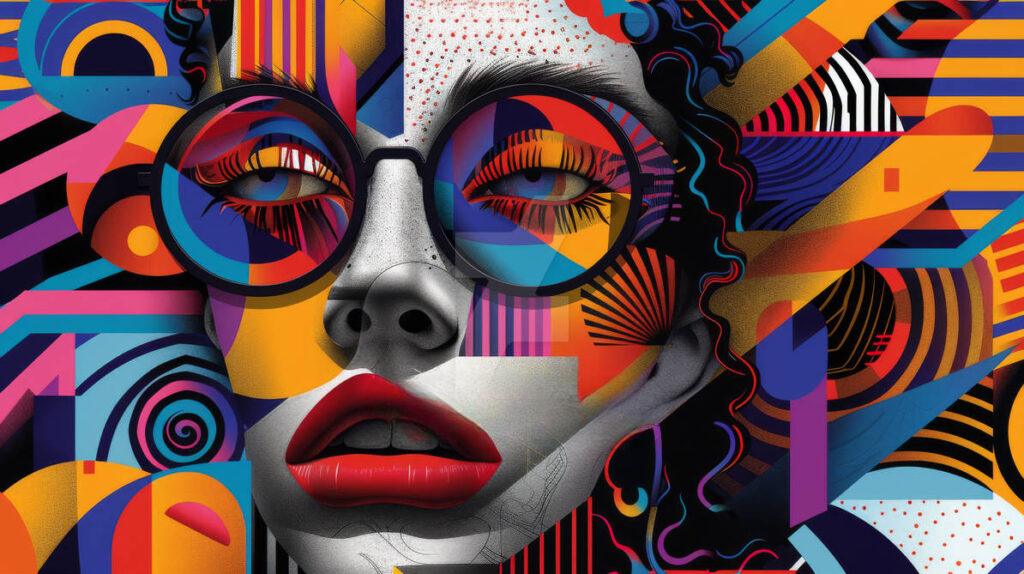The digital art landscape has undergone a significant shift with the introduction of blockchain technology and artificial intelligence (AI). Non-fungible tokens (NFTs) have revolutionized how artists create, sell, and monetize their work. The integration of AI in NFT art is opening up unprecedented opportunities for both seasoned artists and newcomers alike. AI-generated NFTs are transforming the creative process by offering automation, efficiency, and innovation, making NFT art creation more accessible than ever.
In this article, we’ll explore how AI is reshaping the NFT art industry, why now is the perfect time to start creating, and how you can leverage AI in digital art to carve your niche in this rapidly growing space.
Also Read: AI NFT Art Trends to Watch in 2025: What Every Creator Should Know
What Is AI in NFT Art?
AI in NFT art refers to the use of artificial intelligence tools and algorithms to assist in the creation, enhancement, and generation of digital artwork that is subsequently minted as NFTs on blockchain platforms. AI tools leverage deep learning, neural networks, and generative adversarial networks (GANs) to produce unique, high-quality digital art pieces that can be owned, sold, and traded in the NFT marketplace.
Key Components of AI-Generated NFTs:
- Generative Algorithms: AI can generate artwork autonomously based on pre-defined parameters and styles.
- Machine Learning: AI learns from existing art styles and creates original pieces.
- Automation Tools: AI streamlines repetitive tasks, making NFT art creation faster and more efficient.
- Personalization: AI allows customization of NFT art based on user preferences and historical data.

The Growing Popularity of AI in Digital Art
The fusion of AI and NFTs has gained significant traction, with artists and collectors embracing this trend. Some of the reasons for the increasing popularity of AI in digital art include:
- Lower Barrier to Entry: AI tools make it easier for non-artists to create stunning NFT pieces.
- Automation and Scalability: Artists can produce large collections with minimal effort.
- Cost-Effectiveness: AI reduces the cost of hiring designers and illustrators.
- Endless Creativity: AI-powered tools can generate unique and innovative art styles that push creative boundaries.
- Mainstream Adoption: Major brands and influencers are exploring AI-generated NFTs, increasing demand and market value.
Current Trends Shaping AI in NFT Art
As we look ahead, several trends are emerging within the realm of AI-generated NFTs:
1. Generative Collections
Platforms are enabling users to create entire collections from a single prompt. This capability is particularly beneficial for projects needing numerous variations—like avatar-based NFTs—allowing artists to build cohesive series effortlessly.
2. Personalization through Advanced Prompts
Modern AI models can interpret complex user-generated prompts, producing highly personalized artworks that resonate with individual tastes. This level of customization enhances the emotional connection between creators and collectors.
3. Interoperability with Metaverse Projects
As virtual worlds expand, there is growing potential for integrating AI-generated NFTs as dynamic assets within these environments. This could include personalized avatars or interactive elements that enhance user experiences in the metaverse.
Why Now is the Perfect Time to Start Creating AI-Generated NFTs
1. Advancements in AI Technology
Recent advancements in AI, such as generative adversarial networks (GANs), natural language processing (NLP), and deep learning, have made AI-generated NFTs more sophisticated and lifelike. Tools like DALL-E, Artbreeder, and Deep Dream Generator offer user-friendly interfaces that allow even beginners to create high-quality digital art.
2. Booming NFT Market
The NFT market continues to expand, with billions of dollars in transactions. More platforms are integrating AI tools, making it the ideal time to enter the space and leverage AI in NFT art to create valuable assets.
3. Increased Demand for Unique Content
Collectors and investors are constantly seeking novel and unique digital artwork. AI-generated NFTs provide endless opportunities for differentiation and uniqueness, ensuring creators can meet market demands effectively.
4. Community and Collaboration
The NFT space thrives on collaboration. AI enables creators to collaborate across borders, remixing and combining their work with others to produce something truly original.
5. Lower Barriers to Entry
Traditionally, creating digital art required significant investment in software and training. However, AI tools have lowered these barriers:
- Many platforms offer free or affordable subscription models.
- Artists can generate multiple variations of their work with minimal effort, making it feasible to produce entire collections quickly.
6. Enhanced Creativity and Experimentation
AI tools empower artists to push the boundaries of their creativity:
- Artists can experiment with different styles and techniques by utilizing various algorithms.
- The ability to generate numerous iterations allows for exploration without the fear of wasting resources.

How to Get Started with AI in NFT Art Creation
1. Choose the Right Blockchain
Selecting the appropriate blockchain is crucial as it determines the security, transaction fees, and environmental impact of your NFTs. Popular choices include Ethereum for its vast ecosystem, Solana for low fees and speed, and Tezos for energy efficiency. Consider factors such as smart contract capabilities, scalability, and community support.
2. Set Up a Digital Wallet
A digital wallet is essential for storing your NFTs and cryptocurrency. Choose a wallet compatible with your selected blockchain, such as MetaMask for Ethereum or Phantom for Solana. Ensure your wallet is secure with strong passwords and backup recovery phrases to protect your digital assets.
3. Choose the Right Marketplace
Selecting the right NFT marketplace is key to showcasing and selling your AI-generated artwork. Platforms like OpenSea, Rarible, and Foundation offer extensive reach, while niche marketplaces cater to specific art styles or audiences. Consider marketplace fees, audience size, and ease of use when making your choice.
4. Create Digital Art or Content
Leverage AI tools such as Deep Dream, RunwayML, or Artbreeder to generate unique and compelling digital art. Experiment with different AI models, styles, and algorithms to produce pieces that stand out in the crowded NFT space. Ensure your creations align with your artistic vision and market trends.
5. Mint the NFT
Minting is the process of turning your AI-generated art into a blockchain-based NFT. This involves uploading your artwork to a marketplace, setting metadata (title, description, royalties), and paying the associated minting fees. Some platforms offer “lazy minting,” which delays the fee until the item is sold.
6. Sell the NFT on a Marketplace
Once minted, list your NFT for sale by setting a price or choosing an auction format. Promote your artwork on social media, NFT communities, and digital art forums to attract potential buyers. Engage with your audience and provide insights into your creative process to build a loyal following.
How AI Tools Simplify NFT Art Creation for Beginners
1. User-Friendly Interfaces
Most AI art generators come equipped with intuitive interfaces that guide users through the creation process:
- Users can start by writing simple prompts describing their desired artwork.
- Advanced features allow for customization without requiring coding skills or deep artistic knowledge.
2. Integration with NFT Marketplaces
Many AI tools are designed with seamless integration into NFT marketplaces:
- Artists can mint their creations directly from these platforms, simplifying the process of listing their work for sale.
- This integration often includes features like automatic royalty distribution through smart contracts.
Benefits of Using AI in NFT Art Creation
1. Efficiency and Speed
AI tools generate high-quality artwork in minutes, reducing time and effort compared to traditional methods. This allows artists to focus on creativity rather than technical tasks, while automation streamlines repetitive processes.
2. Scalability
AI enables artists to quickly produce hundreds or thousands of unique NFT pieces, maintaining consistent quality across variations. This is especially beneficial for generative NFT projects and large art collections.
3. Experimentation and Innovation
AI offers artists new styles, filters, and composition options, suggesting novel patterns and color schemes. This fosters innovation and allows artists to create unique artwork by analyzing various art forms.
4. Increased Revenue Potential
Using AI, artists can create diverse NFTs for different audiences, maximizing sales. The ability to produce more artwork quickly allows for participation in multiple projects, while AI can aid in dynamic pricing strategies to boost revenue.

Challenges and Considerations
While AI in NFT art presents numerous opportunities, there are some challenges to be aware of:
- Copyright Issues: Ensure that the AI-generated art does not infringe on existing copyrights.
- Market Saturation: As AI tools become more accessible, the NFT market may experience an influx of artwork, making it harder to stand out.
- Authenticity Concerns: AI-generated art may face criticism regarding originality and authenticity.
Future Trends of AI in NFT Art
1. AI-Powered Marketplaces
Expect marketplaces tailored specifically for AI-generated NFTs, providing better categorization and pricing models.
2. Augmented Reality (AR) and Virtual Reality (VR) Integration
AI-generated NFT art will likely merge with AR/VR to create immersive experiences.
3. AI-Curated Art Collections
Curated collections powered by AI could help buyers discover relevant artwork based on their preferences and browsing habits.
4. Decentralized AI Art Platforms
Blockchain-based AI art platforms could provide decentralized governance and revenue-sharing models.
Conclusion
AI in NFT art is revolutionizing the digital art space, offering immense opportunities for artists, collectors, and investors alike. With AI tools making NFT art creation more accessible, now is the perfect time to start exploring this innovative field. Whether you’re an aspiring artist or a tech enthusiast, leveraging AI-generated NFTs can help you unlock new creative possibilities and tap into a thriving market.
Start your journey today by experimenting with AI tools, minting your first NFT, and embracing the limitless potential of AI in digital art!



Pingback: 7 Best AI-Generated NFT Art Projects You Can Own Today - AI Content Minds
Pingback: AI NFT Scams: How to Spot Fake AI-Generated Art (Warning Signs) - AI Content Minds